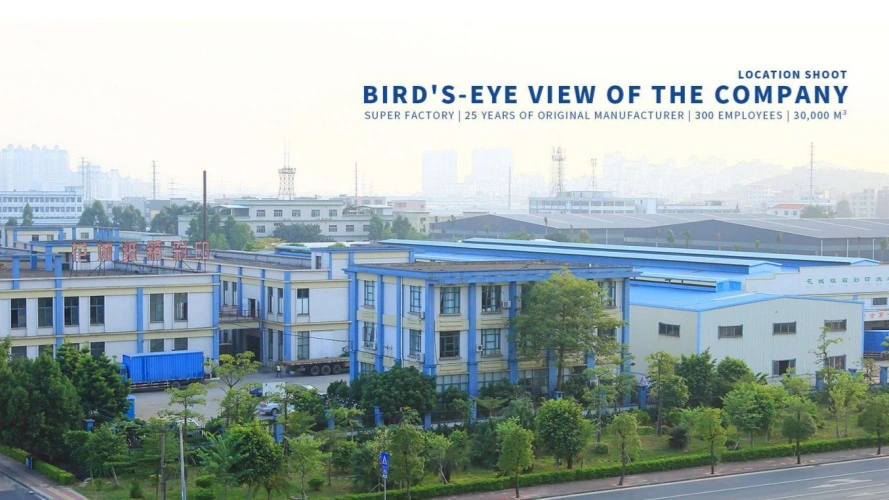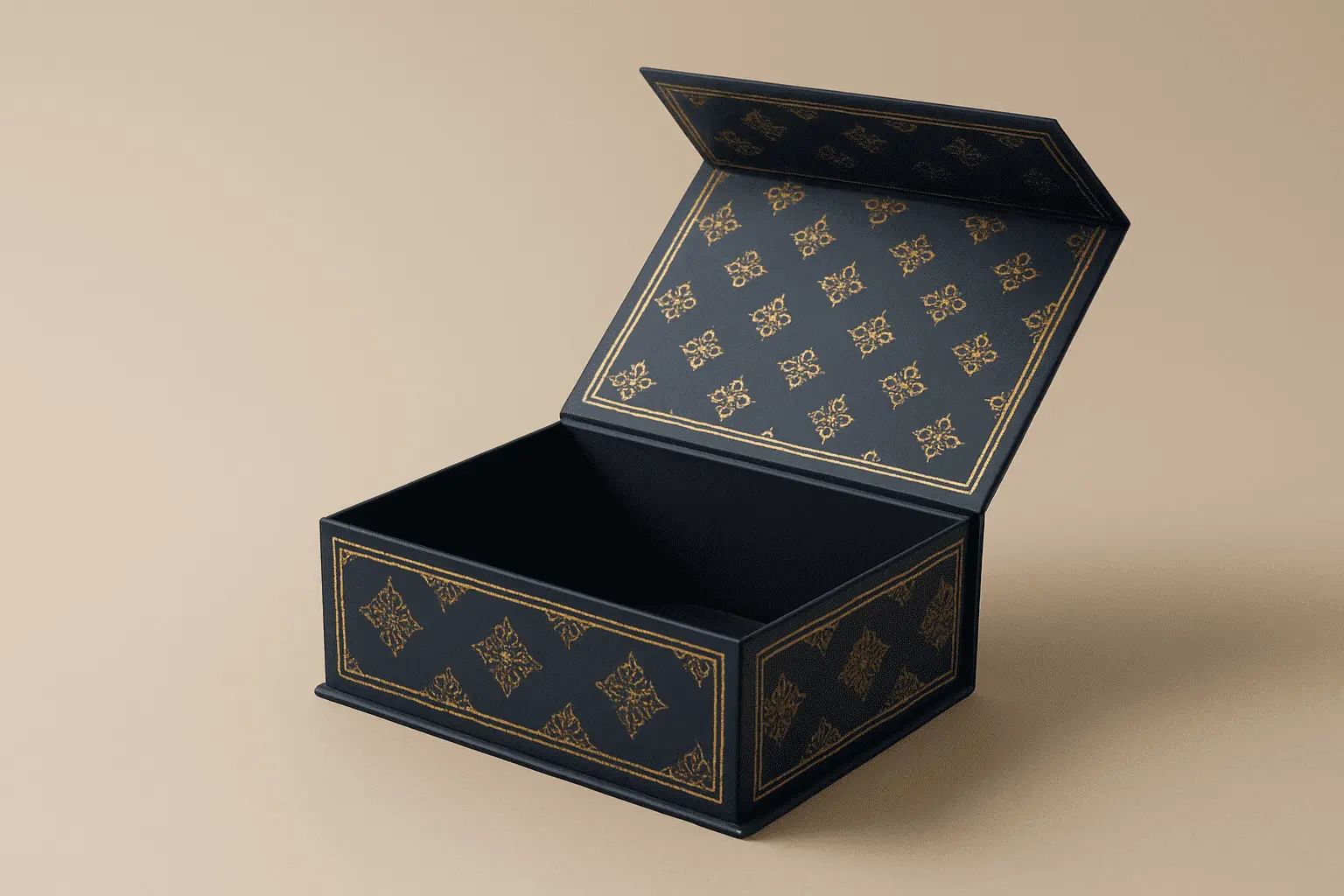How to Design Attractive Product Packaging That Sells?
Picture this: You walk into a store with hundreds of products competing for your attention, yet only one package stops you in your tracks. That's the power of exceptional product packaging design. With 70% of purchasing decisions made at the point of sale, your product packaging isn't just a container—it's your silent salesperson working 24/7 to convert browsers into buyers. In today's competitive marketplace, product packaging has evolved far beyond simple protection and convenience. Modern consumers demand packaging that speaks to their emotions, aligns with their values, and enhances their overall experience. This comprehensive guide will reveal the psychology-backed strategies and practical techniques that transform ordinary packages into sales-driving powerhouses that captivate customers and boost your bottom line.

Understanding the Psychology Behind Effective Product Packaging Design
The foundation of successful product packaging lies in understanding consumer psychology and how visual elements influence purchasing decisions. Packaging design operates on both conscious and subconscious levels, making it essential to master the psychological triggers that compel customers to choose your product over competitors.
Color psychology plays a fundamental role in packaging effectiveness. Packaging designers must master the fundamentals of packaging design, including color psychology, typography, layout, and visual hierarchy. Different colors evoke specific emotional responses and associations. Red creates urgency and excitement, making it perfect for clearance sales or energy products. Blue instills trust and reliability, which explains its prevalence in technology and healthcare product packaging. Green signals natural, eco-friendly qualities that resonate with environmentally conscious consumers.
Typography serves as another crucial psychological element in product packaging design. The font choice communicates brand personality before customers even read the words. Bold, sans-serif fonts suggest modernity and strength, while elegant scripts convey luxury and sophistication. The size hierarchy guides the eye through information systematically, ensuring customers absorb key messages in the intended order.
Shape psychology influences consumer perception significantly. Rounded edges suggest friendliness and approachability, making them ideal for family-oriented products. Angular designs communicate precision and innovation, perfect for tech gadgets and professional tools. The package structure itself becomes part of the brand story, with unique shapes creating memorable unboxing experiences that customers eagerly share on social media.
-
Creating Visual Impact Through Strategic Design Elements
Visual hierarchy determines how customers process information on your package, making it critical for sales conversion. Focus on the main points of your product—brand name and icon, product name, product description, and key attributes or points of differentiation. The most important information should dominate visually through size, color contrast, or placement.
Contrast creates attention-grabbing focal points that guide customer attention exactly where you want it. High contrast between background and text ensures readability even from a distance. Color contrast can highlight special features, promotional offers, or key benefits that differentiate your product from competitors. Texture contrast adds tactile appeal that invites touching, creating a multi-sensory connection with potential buyers.
White space, often overlooked, provides visual breathing room that prevents overwhelming customers with information. Strategic use of white space creates premium perception and improves readability. Luxury brands masterfully employ white space to convey elegance and exclusivity, while budget brands might fill every inch to communicate value and abundance.
Material Selection and Sustainability in Modern Product Packaging
Modern consumers increasingly prioritize sustainability, making material choice a crucial factor in packaging success. The selection between different substrate options directly impacts both environmental footprint and consumer perception. SBS C1S (Solid Bleached Sulfate – Coated One Side) offers premium appearance with excellent printability for luxury products. Its bright white surface provides exceptional color reproduction while maintaining structural integrity for complex die-cut designs.
For brands requiring dual-sided printing, SBS C2S (Solid Bleached Sulfate, Coated Two Sides) delivers superior visual performance on both surfaces. This material proves ideal for products where the interior packaging appearance matters as much as the exterior, creating cohesive brand experiences throughout the unboxing process. The virgin bleached pulp composition ensures food safety compliance for cosmetics and pharmaceutical applications.
CCNB (Clay Coated News Back) provides cost-effective solutions without compromising print quality. The grey recycled backing reduces material costs while the clay-coated front surface delivers vibrant graphics. This option perfectly balances budget considerations with environmental responsibility, appealing to price-conscious consumers who still expect quality presentation.
Brown Kraft materials communicate authenticity and environmental consciousness. The natural fiber texture and earthy appearance resonate with organic, handcrafted, and artisanal brands. Its inherent strength and moisture resistance make it practical for various applications while supporting sustainability messaging that appeals to eco-conscious consumers.
-
Premium Finishing Techniques That Drive Sales
Surface finishing techniques elevate ordinary packaging into premium experiences that command higher prices and build brand loyalty. UV coating creates stunning visual contrast between matte and glossy areas, drawing attention to key design elements. Spot UV application over logos or product names creates tactile interest that encourages customer interaction.
Hot foil stamping delivers unmatched luxury appeal through metallic accents that catch light and create visual movement. Gold foil suggests premium quality and exclusivity, while silver foil communicates modern sophistication and innovation. Colored foils can match brand colors precisely, creating cohesive visual identity across all touchpoints.
Embossing and debossing add dimensional interest that photographs beautifully for e-commerce and social media sharing. Raised embossing creates positive relief that feels substantial and premium, while debossing creates elegant recessed effects. Combined with other finishing techniques, these processes create complex textures that engage multiple senses simultaneously.
Structural Innovation and Collapsible Design Solutions
Innovative structural design differentiates products while solving practical challenges for both manufacturers and consumers. Collapsible rigid boxes represent cutting-edge packaging innovation that delivers premium appearance while reducing storage and shipping costs. These patented structures maintain the luxury feel of traditional rigid boxes while folding flat for efficient logistics.
Large collapsible rigid boxes accommodate magnetic gift boxes with product heights of 100-150mm, perfect for substantial items like electronics or luxury accessories. Medium sizes suit products ranging from 50-100mm, ideal for cosmetics sets or small appliances. Tiny versions handle delicate items measuring 20-50mm, excellent for jewelry or premium skincare products.
The cost savings prove substantial, with collapsible rigid boxes saving more than 60% on shipping and storage expenses compared to traditional rigid boxes. Even compared to standard collapsible designs, these innovative structures reduce costs by 20-30% while maintaining superior aesthetic appeal and structural integrity.
Advanced Production Processes and Quality Control
Professional production processes ensure packaging quality that reflects brand standards and consumer expectations. The printing phase transfers designs onto selected substrates using offset, digital, or flexographic presses. Each method offers distinct advantages: offset printing delivers exceptional color accuracy for large runs, digital printing provides flexibility for short runs and personalization, while flexographic printing excels for corrugated materials and simple designs.
Surface finishing enhances and protects printed materials through various coating applications. UV coatings provide durability and gloss enhancement, while matte coatings create sophisticated low-sheen effects. Aqueous coatings offer environmentally friendly protection with excellent scuff resistance for high-handling applications.
Lamination bonding permanently attaches printed sheets to sturdier substrates or applies protective films. This process significantly improves durability and moisture resistance while enabling special effects like soft-touch finishes or enhanced barrier properties for food packaging applications.
Die-cutting creates precise shapes, windows, and functional elements using custom metal dies. This process enables complex package structures, promotional windows that showcase products, and unique silhouettes that stand out on crowded shelves. Proper die design ensures clean cuts without damaging adjacent areas or compromising structural integrity.
-
Quality Assurance and Testing Protocols
Professional packaging manufacturers implement comprehensive quality control systems throughout production. Color management systems ensure printed colors match approved standards consistently across production runs. G7 color management certification guarantees color accuracy that meets international printing standards.
Structural testing validates package integrity under real-world conditions. Drop testing simulates shipping stresses, while compression testing ensures palletizing stability. Edge crush strength testing verifies corrugated board performance, while closure integrity testing confirms package security throughout distribution.
Environmental testing evaluates package performance under various climate conditions. Temperature cycling identifies potential failures, while humidity testing ensures label adhesion and print quality stability. These protocols prevent costly field failures and protect brand reputation.
Brand Integration and Consumer Experience Design
Successful packaging seamlessly integrates brand identity throughout every visual and tactile element. Whether on the shelf, in advertisements, or online, maintaining brand consistency reinforces brand identity and facilitates instant recognition. Consistent color palettes, typography choices, and design motifs create cohesive brand experiences across all customer touchpoints.
The unboxing experience has become increasingly important in the social media age. Capitalize on the emotional impact of product unboxings. Consider the sensory elements—texture, scent, and visual appeal—that contribute to a memorable experience. Thoughtful structural design creates anticipation and delight, encouraging customers to share their experiences online and generate valuable word-of-mouth marketing.
Interactive packaging elements engage customers beyond the initial purchase. QR codes can link to additional product information, usage tutorials, or exclusive digital content. Augmented reality features create immersive experiences that extend brand interaction time. These digital integrations transform static packaging into dynamic brand ambassadors that continue engaging customers long after purchase.
Conclusion
Designing attractive product packaging that sells requires mastering the delicate balance between visual appeal, functional performance, and consumer psychology. By understanding how color, typography, structure, and materials influence purchasing decisions, brands can create packaging that not only protects products but actively drives sales conversion. The integration of sustainable materials, innovative finishing techniques, and thoughtful structural design creates premium experiences that justify higher price points and build lasting customer loyalty.
Cooperate with GUANGZHOU FETCHING COLOR PRINTING & PACKAGING LTD.
As a leading China Product Packaging factory with over 25 years of experience, GUANGZHOU FETCHING COLOR PRINTING & PACKAGING LTD. stands ready to transform your packaging vision into sales-driving reality. Our 50,000㎡ production facility houses industry-leading equipment including KBA106-(9+1) UV printing machines and Heidelberg XL162-6L printing systems, ensuring exceptional quality across every project.
Our comprehensive capabilities encompass folding gift boxes, display racks, mailer boxes, hardboard folding boxes, and specialized collapsible rigid boxes available in three patented sizes. With over 300 skilled employees and ten experienced packaging engineers, we deliver innovative solutions across food, cosmetics, electronics, and personal care industries.
Our commitment to excellence shows through certifications including ISO14001-2015, ISO9001-2015, FSC, and Disney standards. As your trusted China Product Packaging supplier and manufacturer, we offer competitive Product Packaging prices with High Quality Product Packaging for sale. Whether you need custom Product Packaging wholesale solutions or specialized designs, our team ensures your success through exceptional service and superior products. Contact us at public@fetchingprinting.com to discuss your packaging needs and discover how our expertise can elevate your brand presence.
FAQ
Q: What makes product packaging design effective for sales?
A: Effective packaging combines strong visual hierarchy, appropriate color psychology, clear brand messaging, and premium materials to create emotional connections that drive purchase decisions.
Q: How do sustainable materials impact packaging costs?
A: While some eco-friendly materials may cost slightly more initially, they often reduce shipping costs, appeal to environmentally conscious consumers, and can command premium pricing.
Q: What finishing techniques provide the best return on investment?
A: Spot UV coating and selective hot foil stamping offer excellent cost-to-impact ratios, creating premium appearance without dramatically increasing production costs.
Q: How important is structural innovation in package design?
A: Structural innovation differentiates products, improves functionality, reduces logistics costs, and creates memorable unboxing experiences that encourage social sharing and repeat purchases.
References
1. "Color Psychology in Marketing and Branding" by Gregory Ciotti, Entrepreneur Magazine
2. "Package Design Strategy" by Dennis Puhalla, Industrial Design Research
3. "The Psychology of Packaging: How Color Affects Purchase Decisions" by Jennifer Aaker, Journal of Consumer Psychology
4. "Sustainable Packaging: Consumer Preferences and Market Trends" by Martin Charter, International Journal of Sustainable Packaging

Based on your location and order quantity, you will have the opportunity to receive a limited time free shipping promotion!

Corporate Purpose
